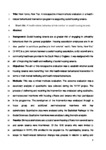New Home, New You: A retrospective mixed‐methods evaluation of a health‐related behavioural intervention programme supporting social housing tenants
| dc.contributor.author | Paisi, Martha | |
| dc.contributor.author | Allen, Zoe | |
| dc.contributor.author | SHAWE, JILL | |
| dc.date.accessioned | 2023-02-13T16:02:16Z | |
| dc.date.issued | 2023-01-11 | |
| dc.identifier.issn | 1369-7625 | |
| dc.identifier.issn | 1369-7625 | |
| dc.identifier.uri | http://hdl.handle.net/10026.1/20313 | |
| dc.description.abstract |
<jats:title>Abstract</jats:title><jats:sec><jats:title>Background</jats:title><jats:p>Social housing tenants are at greater risk of engaging in unhealthy behaviours than the general population. Housing association employees are in an ideal position to contribute positively to their tenants' health. ‘New Home, New You’ (NHNY) is a joint venture between a social housing association, a city council and a community healthcare provider in the South West of England. It was designed with the aim of improving the health and well‐being of social housing tenants.</jats:p></jats:sec><jats:sec><jats:title>Objectives</jats:title><jats:p>The aim of this retrospective evaluation was to establish whether social housing tenants were benefiting from this health‐related behavioural intervention in terms of their mental well‐being and health‐related behaviours.</jats:p></jats:sec><jats:sec><jats:title>Methods</jats:title><jats:p>This was a mixed‐methods evaluation. The outcome evaluation was a secondary analysis of quantitative data collected during the NHNY project. The process of delivering and receiving the intervention was evaluated using qualitative, semi‐structured interviews with housing officers and tenants who had participated in the programme. The development of the intervention was evaluated through a focus group and additional semistructured interviews with key stakeholders. Quantitative data were analysed using the Statistical Package for the Social Sciences. Qualitative interviews were analysed using thematic analysis.</jats:p></jats:sec><jats:sec><jats:title>Results</jats:title><jats:p>Six key stakeholders and a total of seven housing officers from several teams and seven tenants were interviewed. Of the 1016 tenants who were invited to participate in NHNY, 226 enroled in the programme. For participating tenants, the scope for health‐related behaviour change was greatest in relation to eating and smoking. Small positive statistically significant changes in mental health were found between the 6‐ and 12‐month mean score and between the baseline and the 12‐month score.</jats:p></jats:sec><jats:sec><jats:title>Conclusions</jats:title><jats:p>The findings indicate that NHNY may have been beneficial for some participating tenants. Housing officers can have a significant role in promoting health messages and embedding behaviour change among their tenants. Although the programme was implemented as a service improvement rather than a controlled trial and focused on a particular intervention and geographical area, other housing associations may find this evaluation useful for considering whether to adopt some of the principles applied in NHNY in other settings.</jats:p></jats:sec><jats:sec><jats:title>Patient or Public Contribution</jats:title><jats:p>A social housing tenant representative provided input on the methodology and methods used to evaluate NHNY, as well as the information sheet.</jats:p></jats:sec> | |
| dc.format.extent | 752-764 | |
| dc.format.medium | Print-Electronic | |
| dc.language | en | |
| dc.language.iso | eng | |
| dc.publisher | Wiley Open Access | |
| dc.subject | adult | |
| dc.subject | health | |
| dc.subject | housing | |
| dc.subject | mental health | |
| dc.subject | social housing | |
| dc.title | New Home, New You: A retrospective mixed‐methods evaluation of a health‐related behavioural intervention programme supporting social housing tenants | |
| dc.type | journal-article | |
| dc.type | Journal Article | |
| plymouth.author-url | https://www.webofscience.com/api/gateway?GWVersion=2&SrcApp=PARTNER_APP&SrcAuth=LinksAMR&KeyUT=WOS:000911504400001&DestLinkType=FullRecord&DestApp=ALL_WOS&UsrCustomerID=11bb513d99f797142bcfeffcc58ea008 | |
| plymouth.issue | 2 | |
| plymouth.volume | 26 | |
| plymouth.publication-status | Published | |
| plymouth.journal | Health Expectations | |
| dc.identifier.doi | 10.1111/hex.13700 | |
| plymouth.organisational-group | /Plymouth | |
| plymouth.organisational-group | /Plymouth/Faculty of Health | |
| plymouth.organisational-group | /Plymouth/Faculty of Health/School of Nursing and Midwifery | |
| plymouth.organisational-group | /Plymouth/REF 2021 Researchers by UoA | |
| plymouth.organisational-group | /Plymouth/REF 2021 Researchers by UoA/UoA03 Allied Health Professions, Dentistry, Nursing and Pharmacy | |
| plymouth.organisational-group | /Plymouth/Research Groups | |
| plymouth.organisational-group | /Plymouth/Research Groups/Institute of Health and Community | |
| plymouth.organisational-group | /Plymouth/Research Groups/Plymouth Institute of Health and Care Research (PIHR) | |
| plymouth.organisational-group | /Plymouth/Users by role | |
| plymouth.organisational-group | /Plymouth/Users by role/Academics | |
| dc.publisher.place | England | |
| dcterms.dateAccepted | 2022-12-22 | |
| dc.rights.embargodate | 2023-2-15 | |
| dc.identifier.eissn | 1369-7625 | |
| dc.rights.embargoperiod | Not known | |
| rioxxterms.versionofrecord | 10.1111/hex.13700 | |
| rioxxterms.licenseref.uri | http://www.rioxx.net/licenses/all-rights-reserved | |
| rioxxterms.licenseref.startdate | 2023-01-11 | |
| rioxxterms.type | Journal Article/Review |


